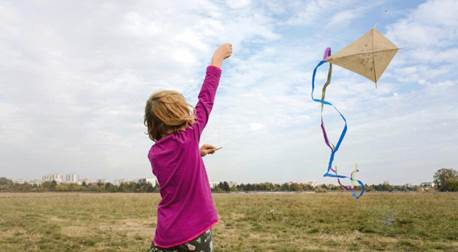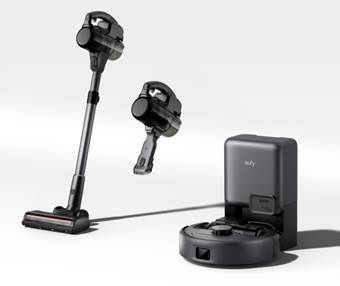Choosing
the right outdoor security camera locations can enhance home security. Poor
placement may cause blind spots, exposing your property. With proper camera
installation, you can detect intruders, monitor activity, and feel more secure.
This guide explains why camera location is crucial and where to set it. When
developing or improving a system, strategic placement is vital. Knowing where
and how to place outside security cameras protects your home from every
viewpoint.

Why Does Outdoor Camera Placement Matter?
Prevent Blind Spots Around Entrances
Intruders
typically gain access through high-traffic entrances. Incorrect camera
placement may result in blind zones that mask suspicious actions. Installing
cameras above or beside doors allows you to monitor who enters and exits. It
tracks package deliveries and theft attempts. Angle your cameras such that they
cover the doorway and some of the surrounding area. This device prevents anyone
from sneaking in and provides crucial footage if something goes wrong.
Well-placed cameras can mean the difference between complete coverage and
costly oversight.
Enhance Visibility for Night Monitoring
Night
vision is required for effective home surveillance. Many break-ins take place
at night, making lighting and camera placement important. Install cameras near
light sources or motion-activated lights. To reduce glare and shadows, avoid
exposing the camera directly to light. Position infrared or low-light models
near intruder entrances or routes. Proper angle installation reduces blind
spots. With the proper camera features and installation, outdoor security
cameras can clearly monitor your property even in low light conditions.
Deter Potential Intruders Proactively
Visible
cameras deter crooks. Outdoor surveillance cameras prevent robbers. That's why
prominent placement is important. Place cameras in visible but inaccessible
places. Ideal places are above garage doors, entryways, and driveways. These
placements suggest home surveillance. This psychological barrier alone deters
many potential intruders. Create no-trespassing zones with visibility and
wide-angle coverage. Strategic camera arrangement is essential for effective,
proactive home defense.

What Are the Best Places to Mount Outdoor Security
Cameras?
Front Door and Main Entry Points
The
most popular entrance for visitors and intruders alike is the front door. Place
a camera here to keep an eye on who enters and exits. Place it on a side wall
or over the entrance at an angle that will capture package deliveries and
facial details. Pair it with a doorbell camera for extra protection. Make sure
it covers the immediate area surrounding the entrance as well as the door
itself. Numerous questionable actions, such as parcel theft and unsolicited
solicitations, take place here. Making this the first line of monitoring gives
your home's busiest access point clear sight and increases accountability.
Driveways, Garages, and Side Gates
Concentrate
on vehicles and storage areas. Cameras placed above driveways can monitor cars
and activity in the area surrounding your garage. Intruders test side gates
first, so keep another nearby. Install cameras that are high enough to see
everything while remaining low enough to recognize persons and registration
plates. Consider angles that monitor pedestrian and vehicular traffic. These
areas are just as important as the front-facing covering but are sometimes
overlooked. The eufy SoloCam E30, with its wire-free installation and clear
images, is suitable for this location. Keep track of all access routes.
Backyards, Fences, and Hidden Access Points
Intruders
are attracted to backyards due to their privacy. To secure this area, install
cameras on the back wall of your home or on fence posts. Concentrate on gates,
garden sheds, or basement windows, which are less visible from the street and
frequently the most vulnerable. Ensure that the camera is elevated to prevent
tampering and angled to track motion along fence lines or pathways. These
concealed areas require the same level of attention as the front of your
property. By positioning security cameras outdoors in the backyard, you
establish a comprehensive view that assists in the detection and deterrence of
unauthorized access from all directions.
How High Should You Mount Security Cameras?
Optimal Height for Wide Angle Coverage
The
mounting height influences image clarity and range of view. The ideal height
for exterior cameras is 8-10 feet. Despite its wide viewing angle, this level
detects facial traits and details. Cameras mounted too high may miss visual
cues, while those set too low are simple to control. Find a balance that keeps
the camera out of reach while detecting movement. Before installing, test
various angles. To maximize exposure without losing quality. Proper height
ensures your security cameras outdoor function at their
full potential, offering both clarity and coverage.
Mounting Tips to Prevent Vandalism
Visual
cameras are prone to vandalism; thus, placement is critical. Use
tamper-resistant housings and mount cameras higher than 9 feet. Avoid low
fences and climbable surfaces. Install heavy-duty mounting brackets and screws
that require tools. From a high position, directing cameras slightly downward
makes them more difficult to destroy while recording critical footage.
Visibility deters, but safe placement protects. These techniques extend the
life of outdoor security cameras while also preventing sabotage.
Avoiding Obstructions Like Trees and Walls
Camera
performance necessitates excellent vision. Before installation, look for trees,
plants, structures, or architecture that could block your view. Trim foliage on
a regular basis and avoid placing cameras beneath overhanging branches that may
shift and cause motion alerts. Walls should not impede vistas or create blind
spots. Consider how to structure lighting and shadows to impact camera
visibility, particularly at night. Outdoor security cameras should offer a good
view with minimal interference. Reduced visual clutter enables precise motion
detection and clear recording of significant events.
Conclusion
Outdoor
camera placement improves home security. Threats range from front entrances to
backyards, necessitating thorough coverage. A proper height, excellent views,
and tamper-resistant mounting all boost system performance. Secure exterior
security cameras deter threats and provide crucial evidence in the event of an
incident. Avoiding common mistakes and applying best practices will improve
your home's defense. When installing or reviewing cameras, correct placement is
the most effective approach to maximize your investment and provide peace of
mind.
